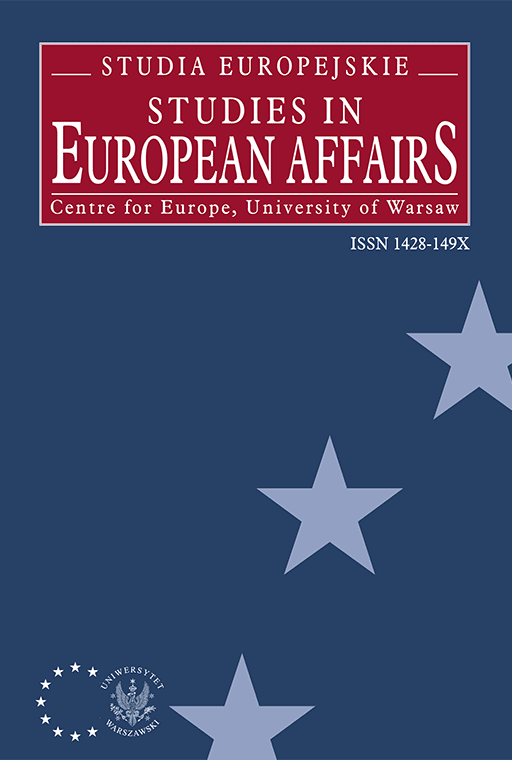
ISSUE: 4/2006
- Volume 40
- Number 4
- 2006
Subscribe NEWSLETTER
Studia Europejskie –
Studies in European Affairs
ISSN: 1428-149X
e-ISSN: 2719-3780
License
Articles published in the journal are under a Creative Commons Attribution – Non Commercial – No Derivatives 4.0 International License
Międzynarodowa Kolekcja Sztuki Nowoczesnej Muzeum Sztuki w Łodzi i jej znaczenie dla dziedzictwa kulturowego Europy
The International Collection of Modern Art at the Museum of Art in Łódź and its significance for cultural heritage of Europe
Abstract
In 1931 a Polish city with rather unpronounceable name of Łódź suddenly appeared on the artistic map of pre-war Europe, next to such prominent capitals of avant-garde art as Paris, Berlin or Prague. This centre of textile industry with little artistic tradition created a museum with a permanent collection of 20th Century European modern art – the first institution of this kind in Europe and second world-wide (after the New York-based MOMA). In pre-WW2 years it was quite unique among European public collections due to how it was created and to its explicitly avant-garde profile. The idea came from five Polish artists, members of the “a.r.” group: painter Władysław Strzemiński, sculptor Katarzyna Kobro, painter Henryk Stażewski and poets Jan Brzękowski and Julian Przyboś. The collection, known as the International Collection of Modern Art, included works donated to the museum by European and Polish artists representing various currents in modern art at the turn of the 1920s, from Cubism to abstract art, most congenial to its founders. Jean Arp, Albert Gleizes, Alexander Calder, Max Ernst, Ferdinand Léger and Theo van Doesburg were among donors. The article presents the history of the collection, describing international, artistic and institutional context of the “a.r.” group’s initiative. The author examines reasons that encouraged European artists to contribute their works to the collection under construction. Motivation and logic behind the Łódź city council’s decision to involve in a controversial undertaking are also examined. The author describes dramatic fate of the collection during the war, its post-war history, notably in the period of Stalinist régime (1952-56), and hardships experienced in the Communist country, with which the collection of avant-garde art had to cope before 1989. The last section is devoted to Ryszard Stanisławski’s efforts as the Museum director (1966-1990). It was his consistent exhibition policy that gave the Museum of Art in Łódź its present place among the most prominent museums of 20th century avant-garde art in the world and universal acknowledgement of the International Collection of Modern Art’s unique place in the history of European museums. Stanisławski’s role in promoting Polish con
Language: Polish
Pages: 121-143
How to Cite:
Harvard
Jurkiewicz-Eckert, D. (2006) "Międzynarodowa Kolekcja Sztuki Nowoczesnej Muzeum Sztuki w Łodzi i jej znaczenie dla dziedzictwa kulturowego Europy". Studia Europejskie – Studies in European Affairs, 4/2006, pp. 121-143.